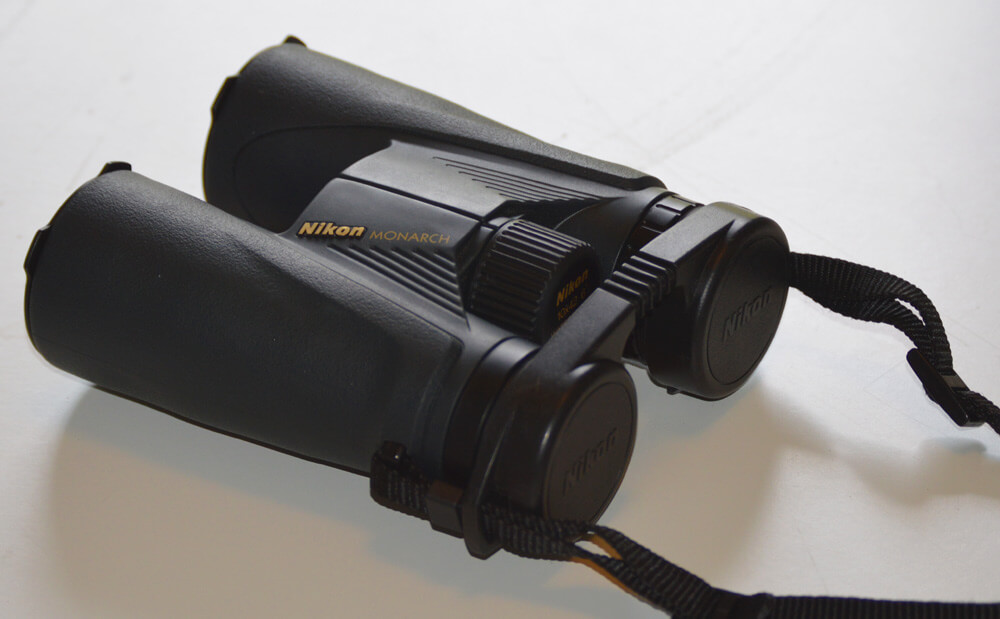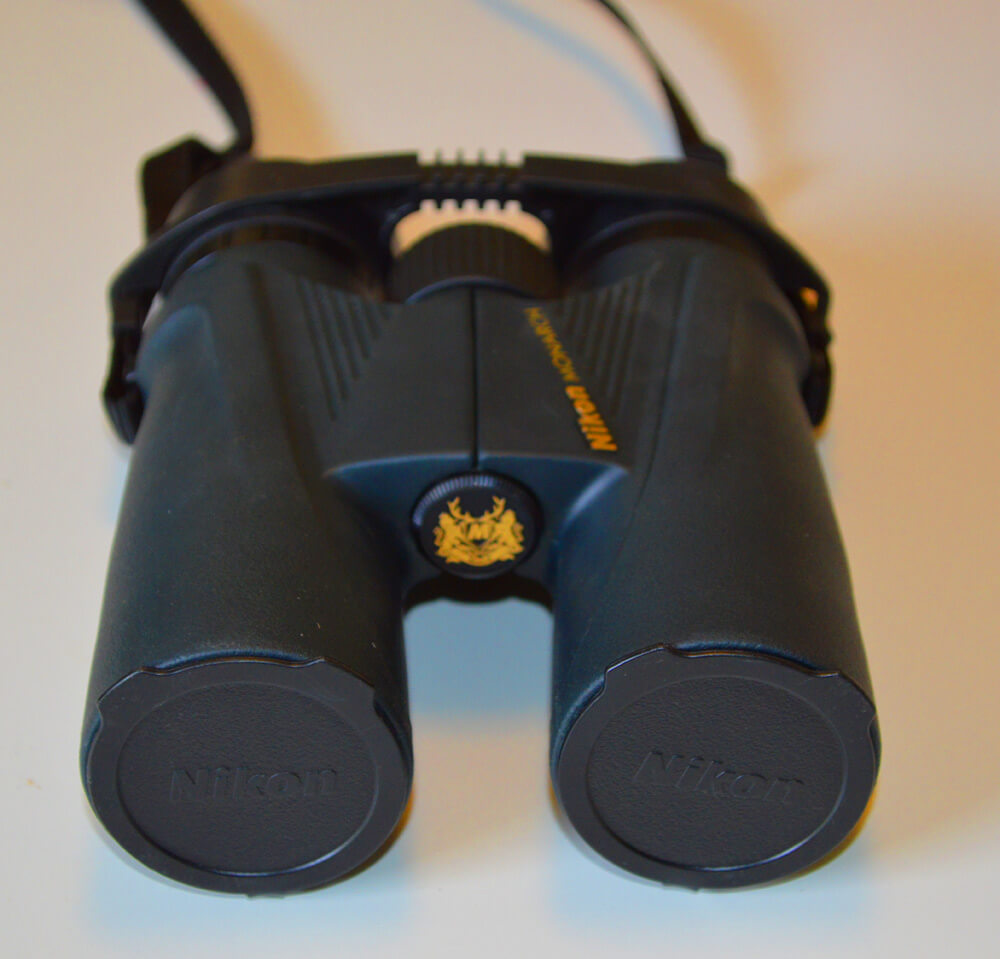If you like to watch the birds and other critters that visit your backyard habitat, you need a decent pair of binoculars to do so. There are a lot of low cost binoculars out there, but they will frustrate you with poor visibility, difficulty with adjusting them, or even poor durability. Expensive binoculars tend to have too high a magnification level and/or lens size for the purpose of looking at wildlife in your backyard. Ideally, a nice mid-range set of binoculars will serve best for this purpose.
Here are the factors I considered when picking my backyard wildlife watching binoculars.
Magnification and Lens Sizes

For your backyard, you don’t need a pair of binoculars with high magnification because things aren’t going to be that far away (unless you have a huge yard). I’ve also found that the higher the magnification, the more practice it takes to be able to find the object you want to see in the frame of the lens. You may even need a tripod to steady the binoculars for really high magnification levels.
I have a very powerful pair of high quality binoculars with high magnification that were given to me as a gift. They are great for looking at very long distances, but for objects that are closer, it’s very hard to find what I am looking for. I keep them in storage until I am traveling to places where I might need something more powerful.
The numbers on binoculars refer to the magnification power and the diameter of the lens. The power (the first number) means that the object you are looking at is magnified by that many times. The second number listed refers to the diameter of the objective lens in millimeters. The larger this number, the more light can enter the binoculars and help you to see what you are trying to look at. However, larger lenses (the second number) make the binoculars bulkier and heavier.
Auto Focusing Binoculars
There are some binoculars that are auto focus or self focusing. I avoid these at all costs because they can be very frustrating. It may depend on what you are used to using. It can cause serious eye strain if you are trying to force the binoculars to focus on something outside of the preset distance.
Go with a Brand You Know and Order From A Company That You Trust
There are a lot of brands of binoculars out there, but if you go with one that you are familiar with and trust, you’ll likely get years of enjoyment out of them with little maintenance or hassle. Well-known brands like Minolta, Nikon, and Pentax have been around for a long time and produce high-quality products. When purchasing your binoculars, get them from a retailer that you are familiar with and one that has excellent customer service.

My Favorite Pair of Binoculars
If you’re like me, you just want someone to recommend a good pair of general-purpose wildlife watching binoculars to be used in the backyard and when traveling. My favorite by far is the Nikon Monarch 10×42 binoculars. They have been with me to four different countries and held up very well during use and transport. They are relatively light-weight, easy to use, and have a high enough magnifications to view wildlife and birds at a good distance. They aren’t cheap, but at around $250-300 they are lower mid-range in cost. I have gotten so much enjoyment out of these binoculars as I spot birds, monkeys, and other critters, it has been worth the investment. I would definitely recommend them for both backyard bird watching and for travel wildlife watching. However, serious birders would want a higher magnification level and larger lens to see those far-off birds.
Beginners might want a lower magnification pair of binoculars to start off with. Perhaps a 7x or 8x magnification with a 30 mm or 42 mm lens would be a good place to start. Go with a well-known brand and avoid cheap binoculars, which can be very frustrating to try and use. When in doubt, ask around for advice from other birders on what they like and recommend. Go to the store and test out several binoculars. If you get the pair that works for you, it’s an investment that can last you many years.
For birders looking to learn more about binoculars, read this thorough article by the Columbus Audubon


